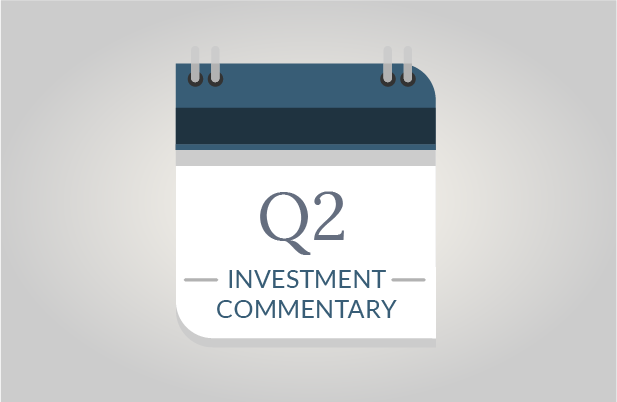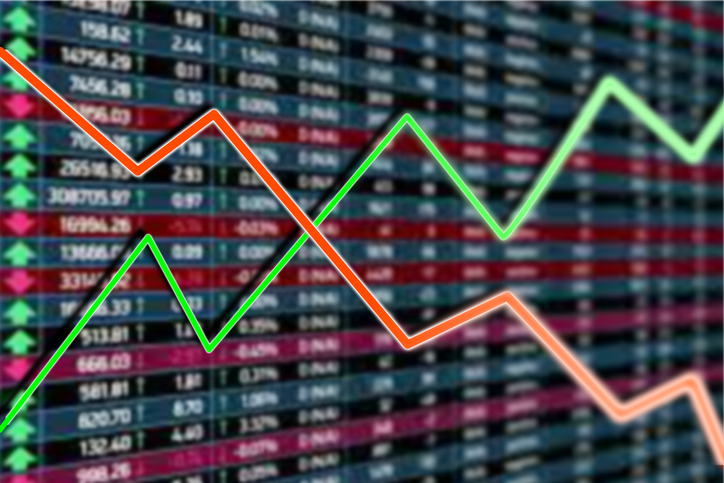- Stocks rallied in the second quarter, posting impressive half year returns.
- The U.S. debt ceiling limit was resolved, averting a government default.
- The Fed paused on rate increases, at least for now.
An Impressive Second Quarter
Stocks continued to stage a strong recovery during the second quarter, achieving within a short six-month period returns that would be impressive over a full year’s timeframe. All major stock indices ended the quarter in positive territory for the year. Two leading benchmark indices, the S&P 500 and Nasdaq, posted double-digit returns. Technology stocks continued to lead market returns after miserable results in 2022. Bonds slightly retreated but remain in positive territory for the year, while also providing positive yields.
This year’s robust returns have helped to recoup losses after a very challenging year for investments in 2022. They are a testament of the importance of maintaining a disciplined investment approach during difficult times.
A summary of key investment market returns as of June 30, 2023, are as follows:
Bloomberg U.S. Aggregate (U.S. bonds) 2.09%
S&P 500 Index (large U.S. stocks) 15.91%
Nasdaq (largely tech & growth stocks) 32.32%
Russell 2000 (small U.S. stocks) 8.09%
MSCI All Country World Index ex-US 9.47%
(International Stocks)
Stock Dominance
Technology stocks are by far outpacing broader market returns this year. Looking deeper, it’s worthwhile to note that just a few companies are supporting the bulk of the S&P 500’s returns, including Apple, Microsoft, Amazon, Alphabet, Nvidia, Tesla, and Meta. Without these stocks, the S&P 500 index return would still be in positive territory, but by a much lower percentage.
While such concentration is something to note, it’s not necessarily new. Just a few key players have dominated returns in the S&P 500 for several years. Furthermore, it’s not surprising that these stocks are seeing sharp recoveries after they were among the most battered stocks in 2022, with some losing over 50% of their value. Many were likely oversold, now regaining ground.
On a positive note, the breadth of market participation broadened in the second quarter. Smaller companies represented in the Russell 2000 index staged stellar returns in the second quarter. Broader participation beyond technology and large-cap stocks highlights more expansive strength in the overall U.S. stock market.
Continued Resilience
This year’s returns have been achieved despite lingering worries about the banking industry, geopolitical strife, and the U.S. debt ceiling.
After three small to mid-size bank defaults startled the markets in March, the banking sector remained fairly stable in the second quarter. Risks are still present but concerns about a potential bank default contagion have waned and recent Federal Reserve stress tests achieved favorable results among the largest U.S. banks.
The more significant headlines of the second quarter included the U.S. debt ceiling and the Russian Wagner Group apparent attempted insurrection. The U.S. has frequently approached debt ceiling limits but has never defaulted. Most politicians understand the economic and political fallout ramifications. Yet, news predictions of a U.S. debt default and ensuing significant market declines were rampant. Despite all of the fear generated by the news, it’s interesting to note that the markets remained fairly calm throughout the negotiations.
More recently, the Russian Wagner Group apparent attempted insurrection occurred over the weekend of June 24th. Investment headlines suggested that geopolitical instability would trigger investment losses once the markets reopened. Instead, the markets rallied in the following week to complete the second quarter with impressive results.
These examples demonstrate that the investment markets remain focused on long-term investment fundamentals. They also highlight that fear-mongering headlines shouldn’t direct your investment decisions. Selling into fear can often result in lost investment opportunities.
The Economy, Here and Abroad
Another headline that has lingered for months is the prospect of recession. Growth has certainly slowed in regions of the world. The Eurozone officially entered a recession this year and growth in China has been extremely weak as the country emerges from Covid restrictions. However, the U.S. economy has remained rather resilient.
The pace of U.S. economic growth has slowed, but it’s still growing. The U.S. economy grew at a 2% annualized pace in the first quarter. Employment remains remarkably strong despite numerous companies announcing layoffs earlier this year. In fact, jobless claims recently declined to their lowest levels over the past 20 months.
Our economy is continuing to grow despite the impact of higher interest rates. Higher rates frequently stymie economic growth because they make borrowing more expensive. This often reduces both consumer and business spending. Thus far, the impacts of higher interest rates have been relatively minimal.
There’s still a possibility that the U.S. could enter a recession. However, continued strength in our economy gives greater hope that a potential recession might be more gradual with a softer impact.
Inflation Improvements
Another highlight of the second quarter was a continued decline in inflation. The Consumer Price Index (CPI) fell to an annualized rate of 4% in May, declining almost a full percent from the month prior. Inflation peaked at 9.1% in June of last year, meaning that inflation has fallen by more than 50% over the last 11months. An inflation rate of 4% is still higher than the Fed target rate of 2%, but it’s a dramatic improvement. This shows that rate increases by the Federal Reserve Board (Fed) designed to combat inflation have had a substantial impact.
The Fed Pauses Rate Hikes
The Fed finally took a break from raising interest rates in June. It was the first break since March of last year when the Fed began its fastest pace of interest rate increases in U.S. history.
The Fed’s aggressive rate increases heavily contributed to large investment market losses in 2022. Investment performance has improved dramatically since the Fed began slowing the pace of rate increases with the eventual pause in June.
The Fed has mentioned further potential rate increases, which are distinctly possible to further combat inflation. However, it’s widely expected that any rate increases will be more tempered than what occurred in 2022. Additionally, it’s expected that the duration of any potential increases could be short-lived to allow for time to evaluate progress. A more muted approach by the Fed could certainly be positive for the markets.
Looking Ahead
It’s encouraging to see strong market performance this year, both in the wake of 2022 and in the face of challenging headlines. It would be wonderful if the pace of investment growth could continue through year-end. While the future is never known, year-to-date growth shows the importance of remaining invested. As always, please contact us with any questions about your investment or financial positioning.
SageVest Wealth Management




